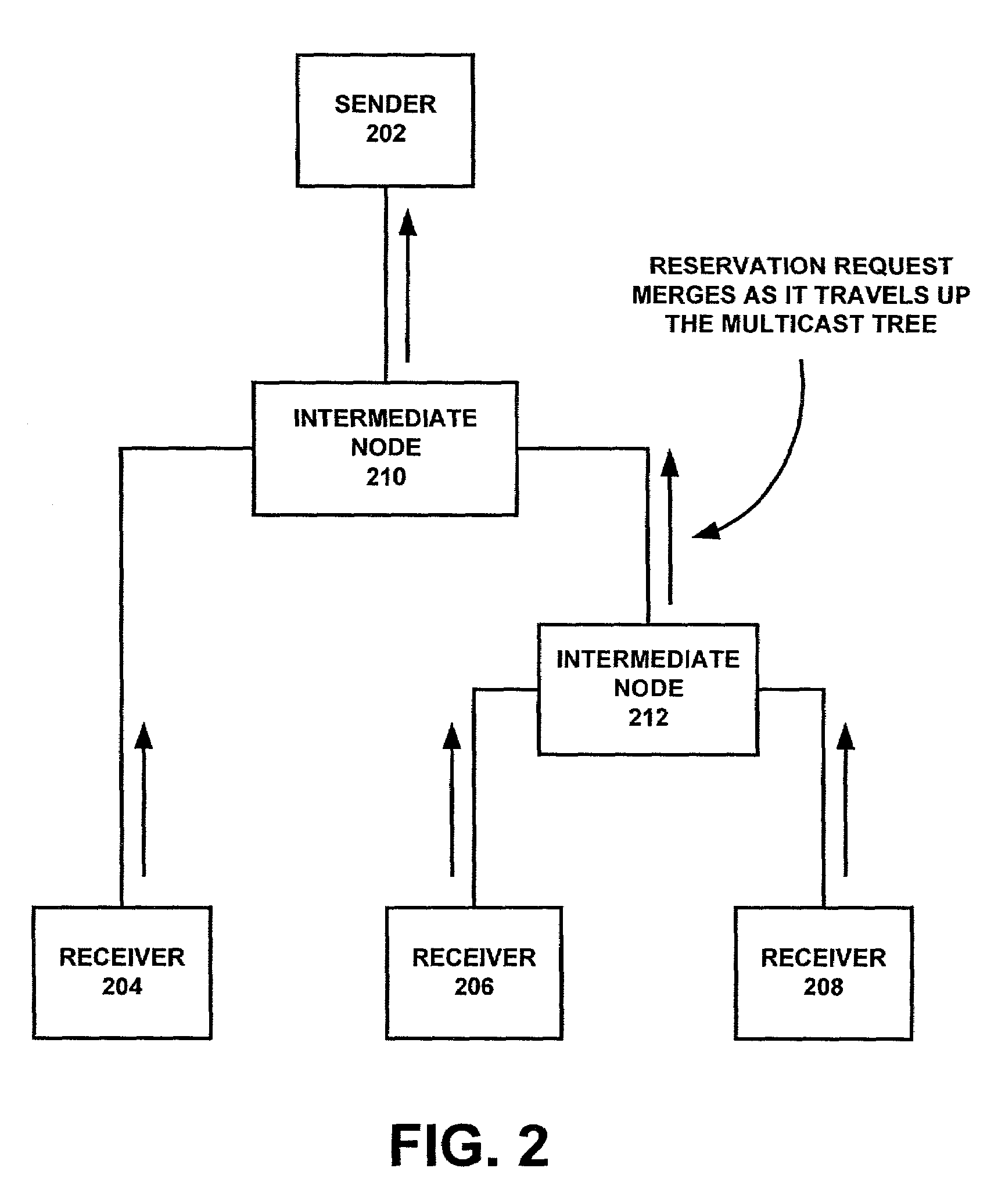Efficient QoS signaling for mobile IP using RSVP framework
- Summary
- Abstract
- Description
- Claims
- Application Information
AI Technical Summary
Benefits of technology
Problems solved by technology
Method used
Image
Examples
Embodiment Construction
[0022]A host uses RSVP to request a specific Quality of Service (QoS) from the network, on behalf of an application data stream. RSVP carries the request through the network, visiting each node the network uses to carry the stream. At each node, RSVP attempts to make a resource reservation for the stream.
[0023]To make a resource reservation at a node, the RSVP unit 101 communicates with two local decision modules, admission control 102 and policy control 104. Admission control 102 determines whether the node has sufficient available resources to supply the requested QoS. Policy control 104 determines whether the user has administrative permission to make the reservation. If either check fails, the RSVP program returns an error notification to the application process that originated the request. If both checks succeed, the RSVP unit 101 sets parameters in a packet classifier 106 and packet scheduler 108 to obtain the desired QoS. The packet classifier 106 determines the QoS class for...
PUM
 Login to View More
Login to View More Abstract
Description
Claims
Application Information
 Login to View More
Login to View More - R&D
- Intellectual Property
- Life Sciences
- Materials
- Tech Scout
- Unparalleled Data Quality
- Higher Quality Content
- 60% Fewer Hallucinations
Browse by: Latest US Patents, China's latest patents, Technical Efficacy Thesaurus, Application Domain, Technology Topic, Popular Technical Reports.
© 2025 PatSnap. All rights reserved.Legal|Privacy policy|Modern Slavery Act Transparency Statement|Sitemap|About US| Contact US: help@patsnap.com



